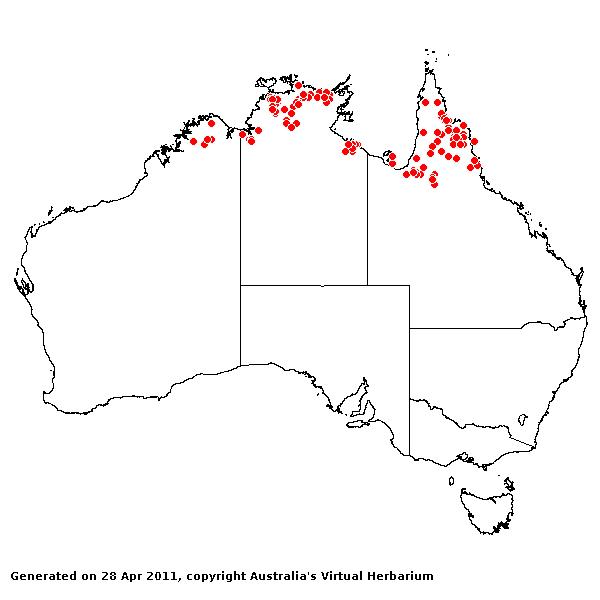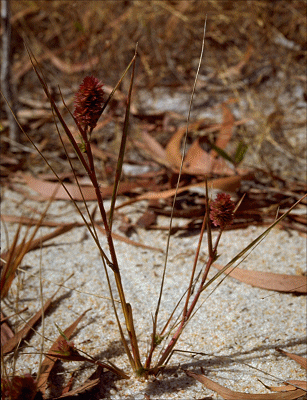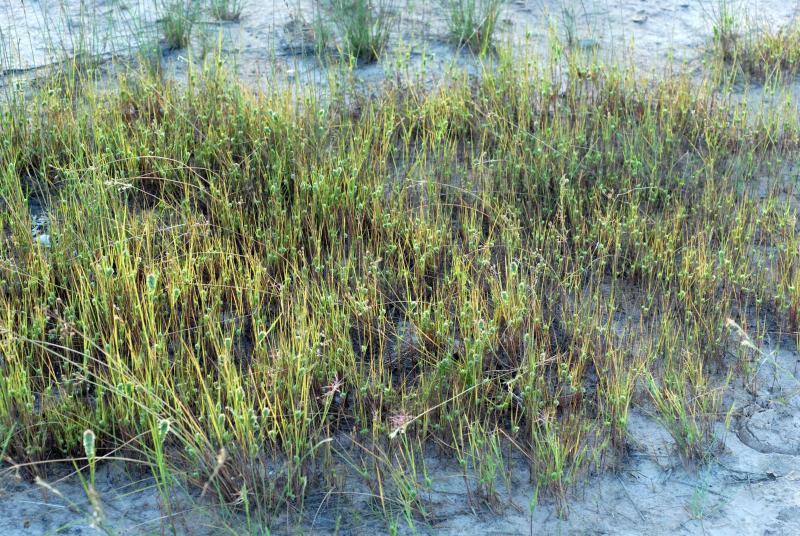Heterachne abortiva (R.Br.) Druce. Bot.
Soc. Exch. Club Brit. Isles 1916: 627 (1917).
Classification. (GPWG 2001) : Subfamily Chloridoideae. Cynodonteae.
Basionym and/or
Replacement Name: Poa abortiva
R. Br., Fl. Nov. Holl. 181 (1810).
Type of Basionym or
Protologue Information: Australia.
Queensland: Burke
District: Gulf of
Carpentaria, Island C.: Nov. 1802, Brown 6268LT designated
by C.E.Hubbard 1935.
Key references
(books and floras): [1878] G.Bentham, Flora Australiensis 7 (635 as Heterachne
brownii), [2002] D.Sharp & B.K.Simon, AusGrass, Grasses of Australia.
Illustrations:
[2005] K.Mallet (ed.), Flora of Australia 44B: Poaceae 3
(Fig. 74E-F).
Habit. Annual.
Culms erect or decumbent, 10–35 cm tall, 3–5 -noded. Ligule a fringe of hairs.
Leaf-blades flat or convolute, 5–18 cm long, 0.8–4 mm wide.
Inflorescence.
Inflorescence solid, a panicle. Panicle oblong, 1.5–5 cm long, 1–2 cm wide.
Spikelets.
Spikelets sessile. Fertile spikelets 1 or more flowered, with 1 fertile floret
or many flowered, with at least 2 fertile florets (1–3), comprising 1–3 fertile
floret(s), with diminished florets at the apex, oblong or ovate, laterally
compressed, 3–11 mm long.
Glumes. Glumes
similar. Lower glume ovate, membranous, keeled, 1-keeled, 1 -nerved. Upper
glume ovate, 1.8–2.5 mm long, keeled, 1-keeled, 3 -nerved.
Florets.
Fertile lemma 2.6–3.6 mm long, keeled, winged on keel, 3 -nerved. Lodicules
present. Anthers 3. Grain 1.3–1.5 mm long.
Continental
Distribution: Australasia.
Australian
Distribution: Western Australia, Northern Territory, Queensland.
Western
Australia: Gardner.
Northern Territory: Darwin & Gulf, Victoria
River. Queensland:
Burke, Cook.
Notes.
Common in some roadside locations, and has been collected with H. gulliveri
var. gulliveri, from which it is readily distinguished by its denser,
spiciform panicles overtopped by leaves, and its longer and usually more
numerous sterile florets.
Distributed
from the Kimberley, W.A., around to the Gulf of Carpentaria, N.T., within 150 km of the coast,
and across Cape York Penin., Qld. In the Kimberleys recorded from grassland
areas among woodland in fine-textured loamy soil; elsewhere known from heavy
grey and yellow clays in seasonal swamps, and lateritic sandy soils, fine
solodized and podzolized soils, in woodlands or shrublands of Eucalyptus
tetrodonta, E. polycarpa, Melaleuca, Hakea, Acacia.








